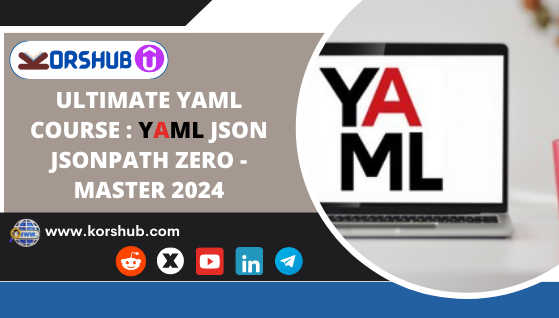Introduction to YAML
YAML (YAML Ain't Markup Language) is a human-readable data serialization format used extensively in configuration files and applications where data needs to be structured clearly and intuitively. It stands out for its simplicity and readability, making it a popular choice for developers and system administrators alike.
Why Learn YAML in 2024?
In the rapidly evolving tech landscape of 2024, mastering YAML is essential for anyone working with cloud infrastructure, DevOps, or application development. YAML provides a powerful and efficient way to define configurations and settings, enabling seamless deployment and management of modern software systems.
Understanding YAML Basics
YAML Syntax
YAML uses indentation and key-value pairs to represent data. Its syntax is designed to be easy to read and write, making it ideal for both humans and machines.
YAML vs. JSON
YAML and JSON (JavaScript Object Notation) are both widely used for data serialization, but they have distinct differences. While JSON is more compact and often preferred for APIs, YAML offers greater readability and flexibility for configuration files.
YAML Data Types
YAML supports various data types, including strings, numbers, lists, and maps. This versatility allows developers to represent complex data structures efficiently.
Mastering YAML Features
Advanced YAML Techniques
-
Anchors & Aliases: Use references to avoid redundancy and keep YAML files concise.
-
Multi-line Strings: Handle large text blocks gracefully using YAML's multi-line string format.
-
Conditional Constructs: Employ YAML's conditional features for dynamic configurations.
Integrating YAML with JSON
JSONPath is a powerful tool for querying and manipulating JSON data. By understanding how YAML and JSON complement each other, developers can leverage the strengths of both formats effectively.
YAML Best Practices in 2024
To excel in YAML usage this year, consider these best practices:
-
Consistent Formatting: Maintain a standardized YAML structure across projects.
-
Version Control: Store YAML files alongside code in version control systems for traceability.
-
Documentation: Document YAML configurations comprehensively for team collaboration.
Taking YAML to the Next Level with JSONPath
JSONPath extends YAML's capabilities by enabling sophisticated querying of JSON data. This skill is invaluable for navigating complex data structures efficiently.
Key JSONPath Concepts
-
Path Expressions: Use dot notation to traverse JSON hierarchies.
-
Filtering: Narrow down JSON data using filter expressions.
-
Aggregation: Combine and aggregate JSON data with advanced functions.
Conclusion
In conclusion, mastering YAML, JSON, and JSONPath in 2024 unlocks limitless possibilities for software development and infrastructure management. Whether you're configuring cloud resources, automating deployments, or optimizing APIs, a strong command of these technologies is indispensable.






